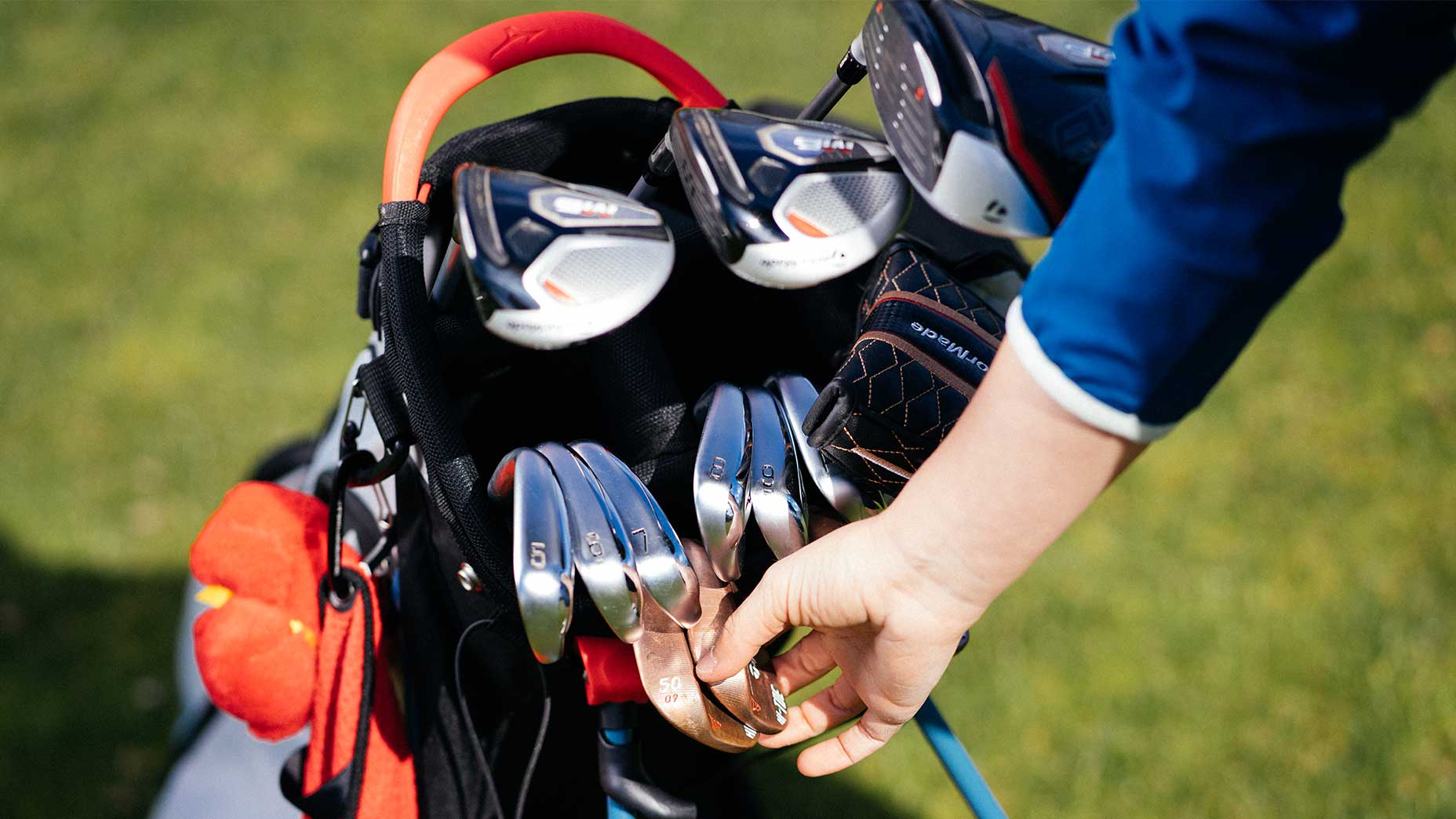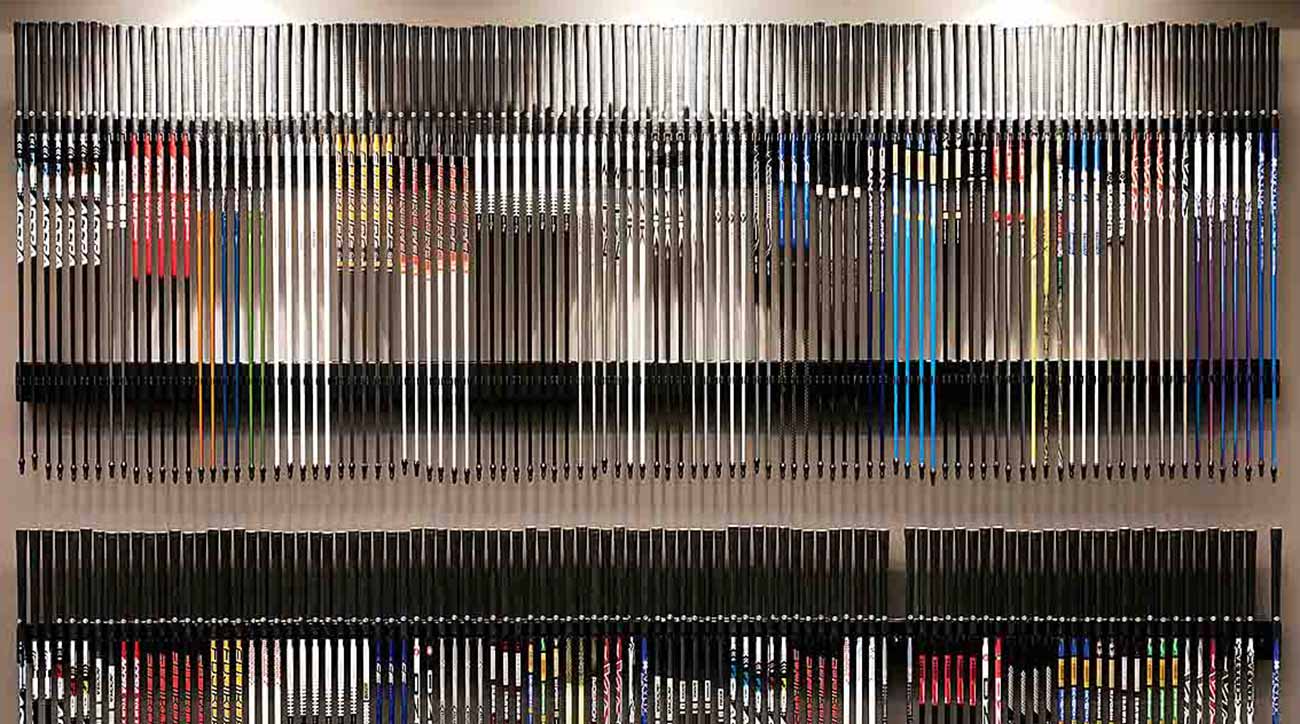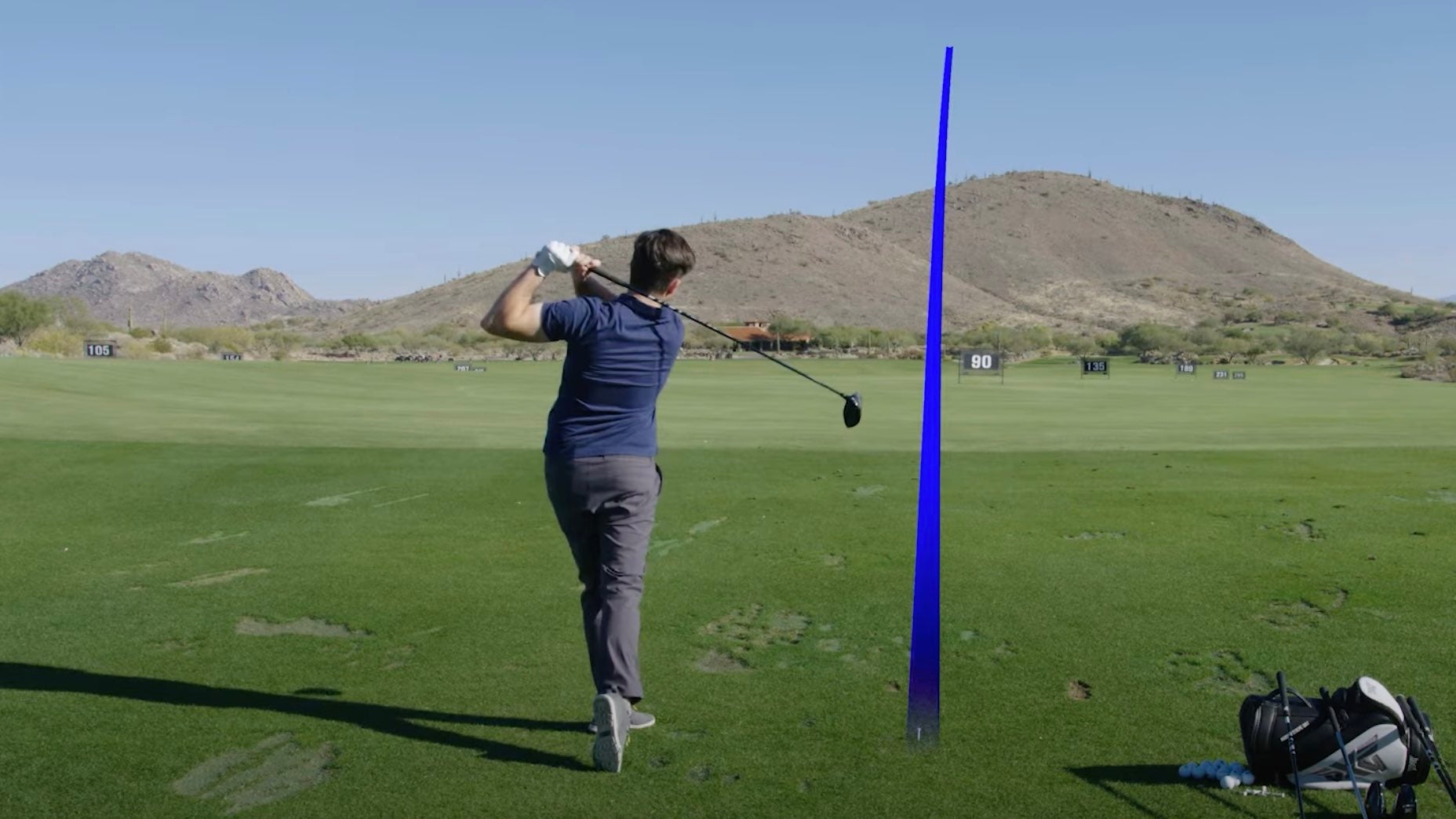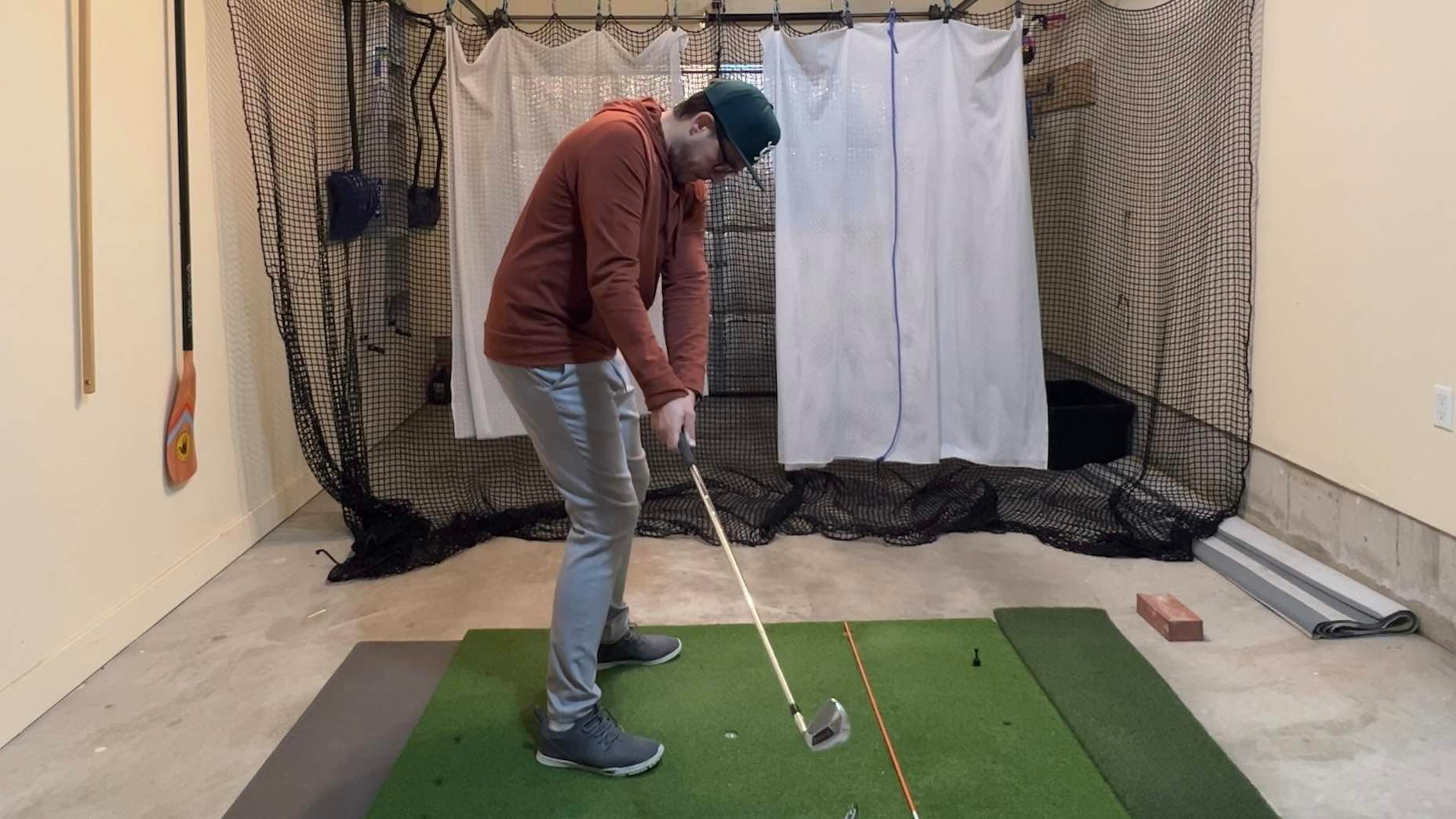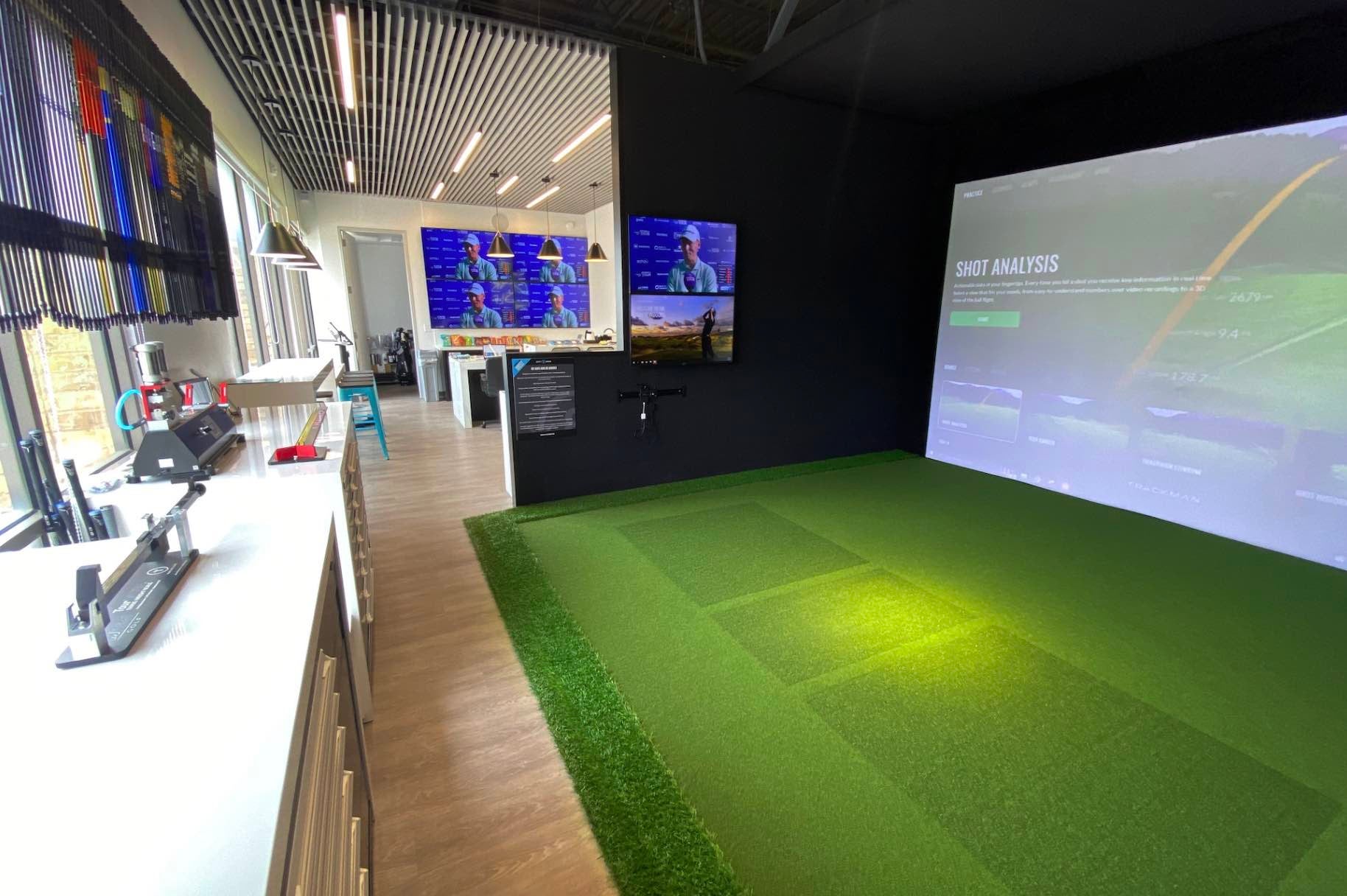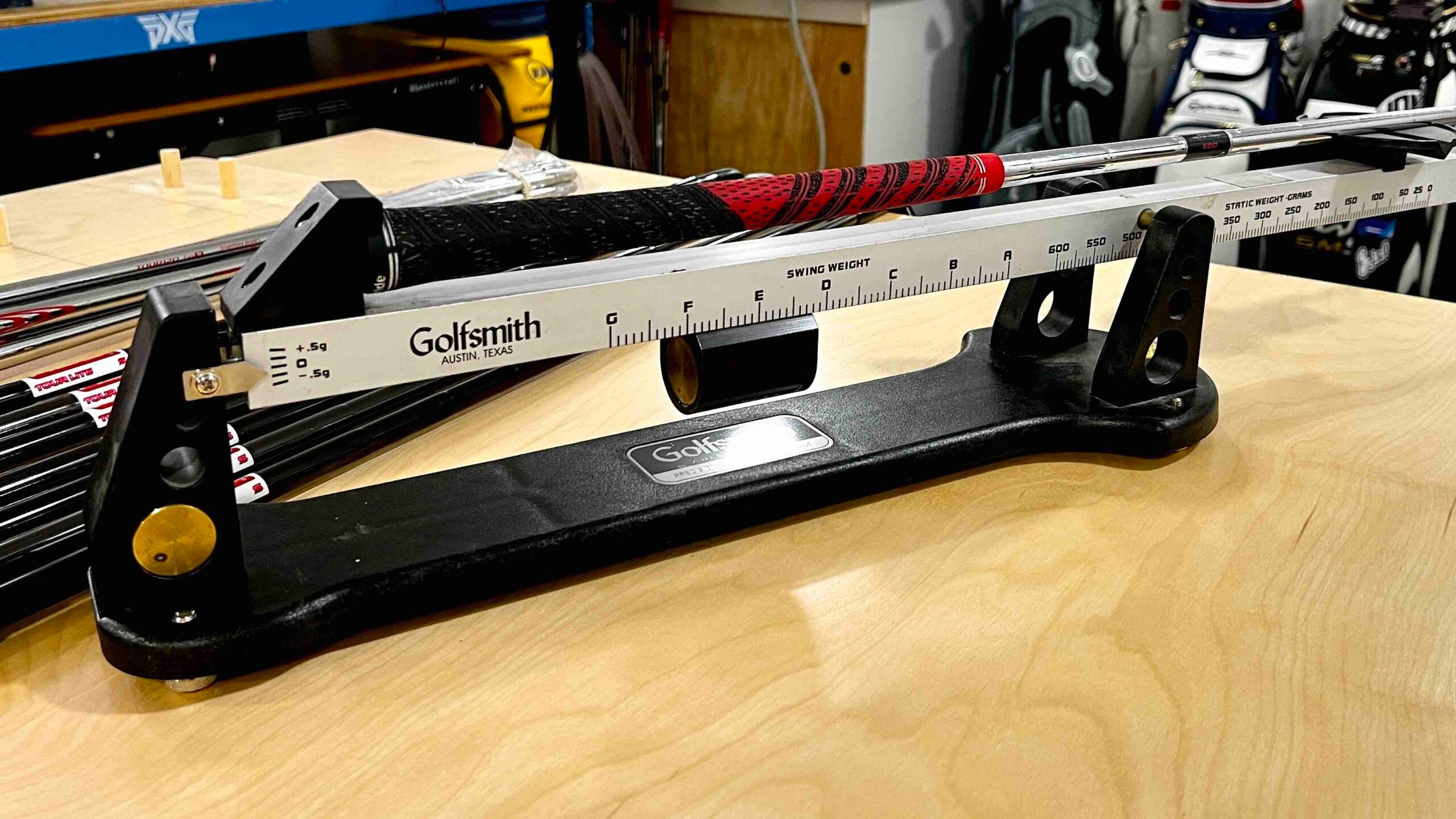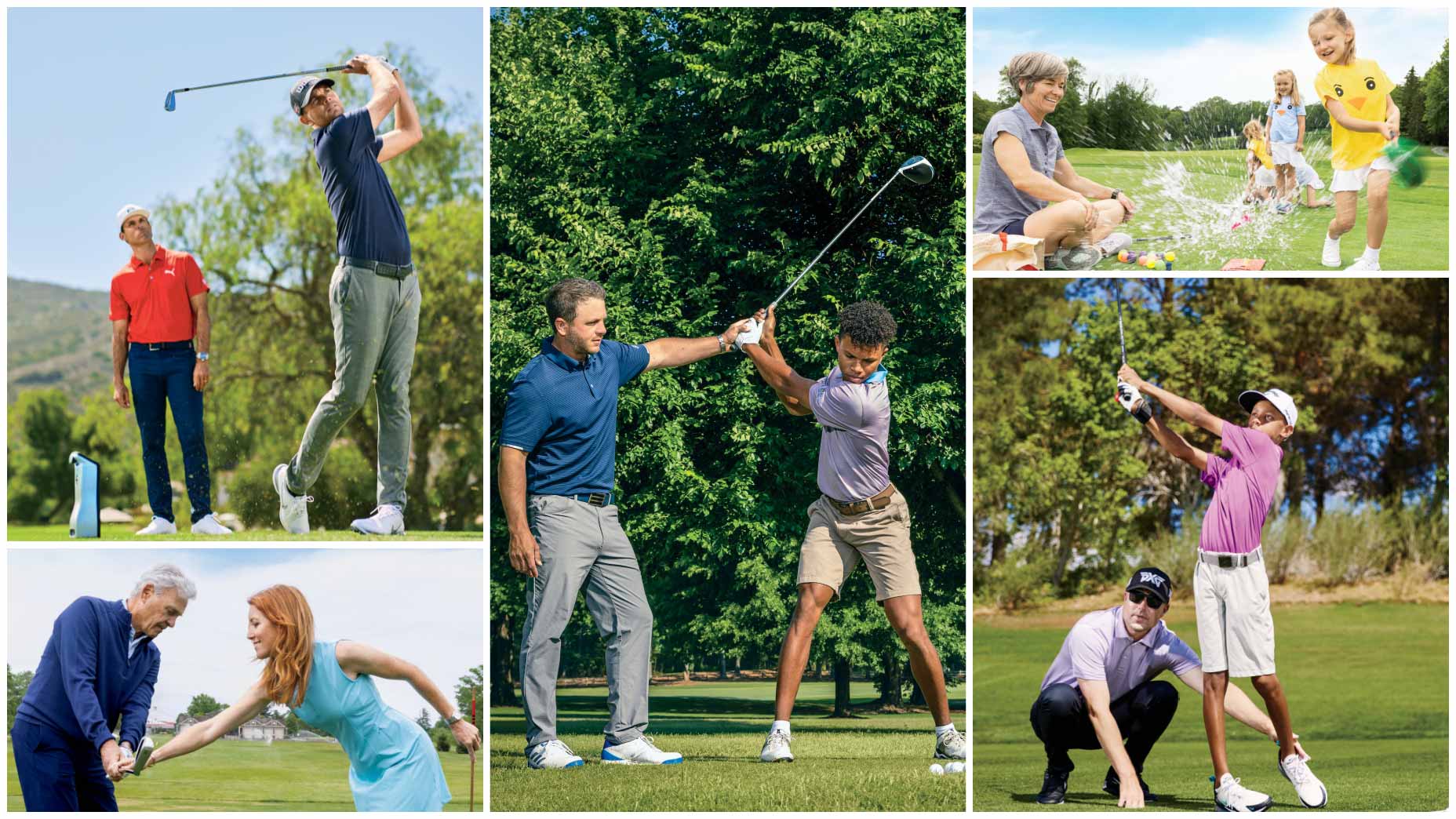When’s the right time to replace your high-level junior golfer’s hand-me-down clubs?

Ike Rothman's golf bag got a much-needed upgrade.
Christian Hafer
Father’s Day. A time for new socks, a second beer without grief, a few nice handwritten sentences about the great job you’re doing as a parent. You’re the best, at least until the clock strikes midnight.
Ego boosts aside, it’s as good a time as any to take stock of one’s performance in this starring role. As time has passed, I’ve generally stopped agonizing over it — whatever my shortcomings on the parenting front, I know they’re not from lack of time, effort, love or introspection. Plus, this year I’d finally resolved one of the big things causing me agita: the contents of my son’s golf bag.
This past fall, Ike, 11 years old and in seventh grade, made the high school varsity squad. At five feet tall and 100 pounds, he looked like the team mascot, but his game is no joke. His 3-over-par 37 secured medalist honors by four shots in one dual match, and in the four-best-scores-out-of-six format, Ike was the only player whose score counted in every start.
He ended the season at sectionals with an 83 on a 6,000-yard course, good for a T7 finish in a field of 47. This he deemed a slight disappointment, given the 79 in his practice round a few days prior. Regardless, it got Ike a spot in this spring’s state championship qualifier, sadly since canceled due to the coronavirus.
You’ll forgive a father’s heart (and head) swelling with pride. I had more complicated feelings about the contents of the little big man’s carry bag:
Driver: A demo TaylorMade M6 loaner from his instructor. Yes, 12 degrees and an R flex shaft, but at 45 inches, Ike had to choke down on it so much that it would almost catch his shirt on the downswing.
3-wood: TaylorMade Miscela 3-wood from Mom’s circa-2000 set.
5-hybrid: TaylorMade RBZ with a firm shaft, gifted to Ike by a local college golfer he admires — good luck prying that thing from him.
4-, 5- and 6-iron: Vapor by Nike, passed down midseason by his grandfather Pop-Pop without prior parental warning.
7-PW: More Miscelas.
Gap, sand and lob wedges: A set of old Vokey Raw Tour Grind wedges with timeworn grooves that Ike bought with Tooth Fairy money for $30 from the used barrel at a local course.
Putter: A 1980s-era Cleveland Classics putter, cut down and given to him by Pop-Pop.
Golf bag? Really, it was a grab bag.
The situation simply offered a ritzy, golf-specific variant on the question asked by every parent for whom money is indeed an object: “How much should I spend on the kid’s shoes when he’ll grow out of them before we’ve paid the credit-card bill?” Equipment, lessons, membership and greens fees, tournaments: What chunk of the budget should go to clubs? How long can, or should, one hold off on breaking the bank?
My wife and I wrestled with this dilemma all last summer. Ike plays on a local U.S. Kids junior tour, where his two main competitors are kitted out like petite PGA Tour pros. One has a bagful of custom-fit PXG irons, the latest Callaway woods and fairways, (current) Vokey wedges and a Scotty Cameron putter — somewhere in the neighborhood of $5,000 slung over his shoulder. The other’s sticks are a tad less glitzy but still all made-to-measure Titleists and Mizunos.
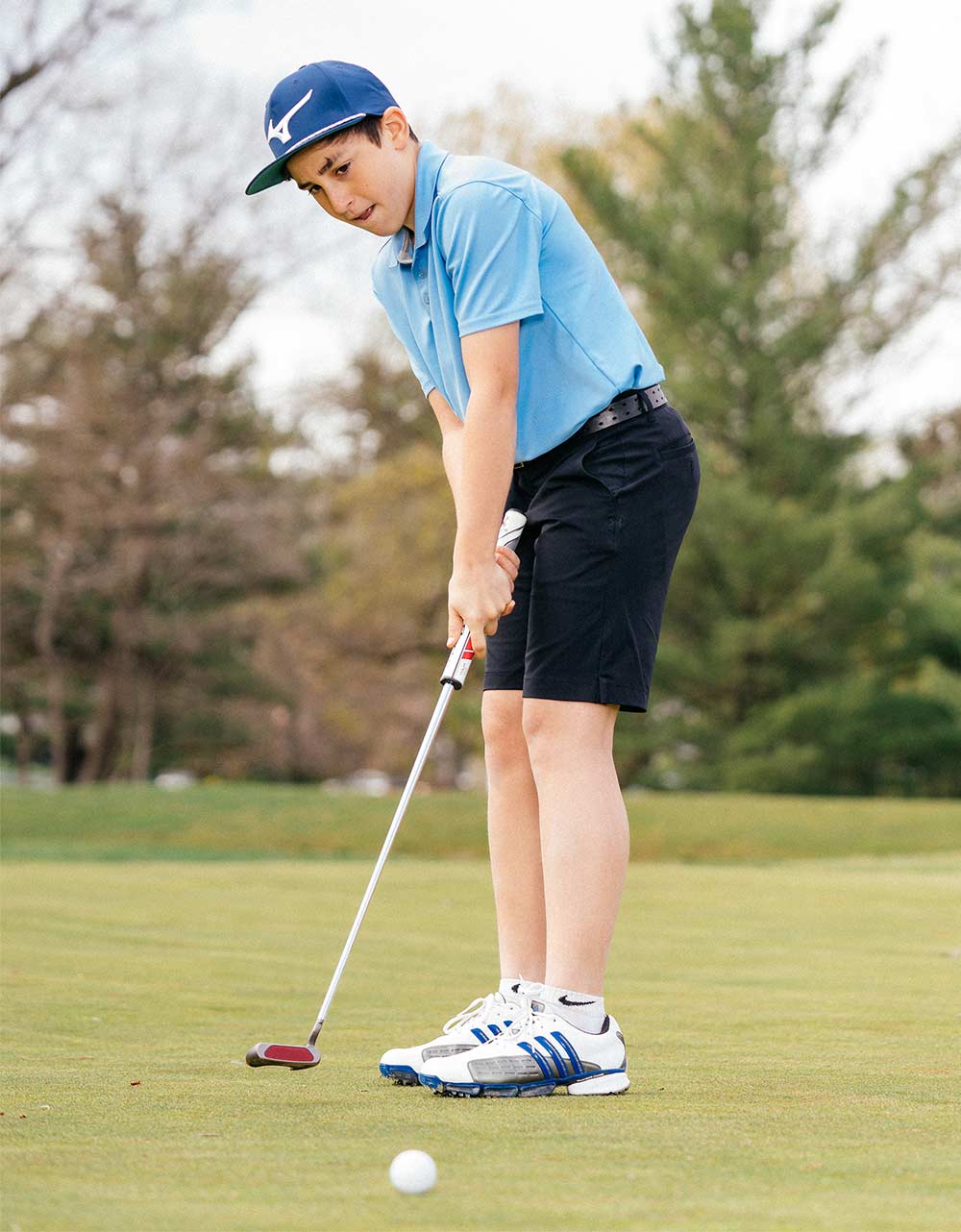
We tried to use Ike’s equipment deficit as a teachable moment. It’s the carpenter, not the tools. Seve learned to play golf with one club. Et cetera, et cetera. To the kid’s credit, he largely bought into our arguments about the time not being right. Whining was kept reasonable — no mean feat given that he fell a few strokes short of his nemeses at every tournament.
Maybe his ragtag sticks weren’t the difference, but they couldn’t have helped. Ike’s accomplishments on the course, and in the classroom, had earned him the chance to find out. For his 12th birthday present, I took him and his coach, Vince Benedetto of McCann Memorial GC in Poughkeepsie, N.Y., to True Spec Golf (owned, like this website, by 8AM Golf) on 42nd Street in Manhattan.
If an Apple store and an exclusive country club pro shop had a baby, it would look like True Spec’s pristine New York flagship. We arrived a few minutes before the store opened, and Tim Briand, the company’s director of fitting and sales, unlocked the door. Ike’s eyes skittered around the room as he took in the fitting bays, soft-goods displays and multicolored club shafts hanging vertically like an art installation, which for him they were. Angels may have been singing as well.
With his Jason Gore build and Gore Vidal self-assurance, Briand cuts an imposing figure. I feared an aloof surgeon type, focused solely on outcomes, not deigning to explain the process. What we got was that gruff, beloved science teacher who describes things at the appropriate level to each student, asks engaging questions and flashes just enough wiseass humor to make you feel like a co-conspirator, not simply a pupil. That he occasionally had to step away from overseeing matters to help with the putter fitting of a one-name-famous LPGA pro only underscored his authority. Two colleagues, Caulen Coe and Sean Greer, took the baton without a hitch when this occurred.
My first concern was pure parental neurosis. Would Ike’s swing look sufficiently impressive? He hasn’t touched a club in a few weeks. Will the fitters think him worthy of the process?
No worries on that front, as Ike, on plane and on balance, pounded balls into the screen and watched their virtual flight like Narcissus admiring his reflection. “He’s swinging better than he was at the end of the season,” Coach Vince murmured to me. Kid likes an audience. Relieved, I asked Tim if it were possible that having such a variety of cockeyed clubs somehow had helped Ike — by, you know, making him more sensitive to his equipment or something. In essence, can 14 wrongs make a right? Tim wasn’t having it.
“That potpourri of clubs is common with juniors — and it plays hell,” he said. “They adjust better and more quickly than adults. So when you give them a bag of 14 completely different clubs, they’re in a confused state, perpetually adjusting. It’s very difficult to build any habits and repetitive movement patterns.”

So much for my Father of the Year award. On the bright side, my respect for Ike’s talent was only deepening. The fitting began by getting baseline numbers (ball spin rate and speed, carry distance, etc.) with Ike’s current 6-iron and then “blueprinting” the club itself to determine its various characteristics, such as lie, loft, swingweight and shaft frequency. As it happens, the mid-irons Pop-Pop had given him were a 1/2-inch longer than standard. So much for that Grandfather of the Year award, too.
At bottom, initiates know, clubfitting is pretty much a high-tech Goldilocks affair. You dial in the numbers for (a) the shaft family (which is not, as I’d guessed, a synonym for brand but instead refers to the collective characteristics of the shaft) and then (b) the clubhead, until everything is just right, i.e., shots are flying farther, in the appropriate trajectory window, with less dispersion.
For children and adults alike, Tim emphasized, the teaching pro’s presence is vital to a successful fitting. “A good fitter and a good teacher are working together,” he said. The pro’s involvement also means buy-in to the new equipment rather than reflexively blaming it. To revisit the baby metaphor, showing up for a lesson at the range with your surprise new set is like a one-night stand showing up at the door nine months later with your surprise new kid.
With children especially, a pro can offer more objective insight than the player even if, as Tim also noted, adults are hardly immune from misdiagnosing their problems. In a similar vein, pros can have a blind spot about the role of equipment, and fitters a blind spot about swing flaws. It takes a village.
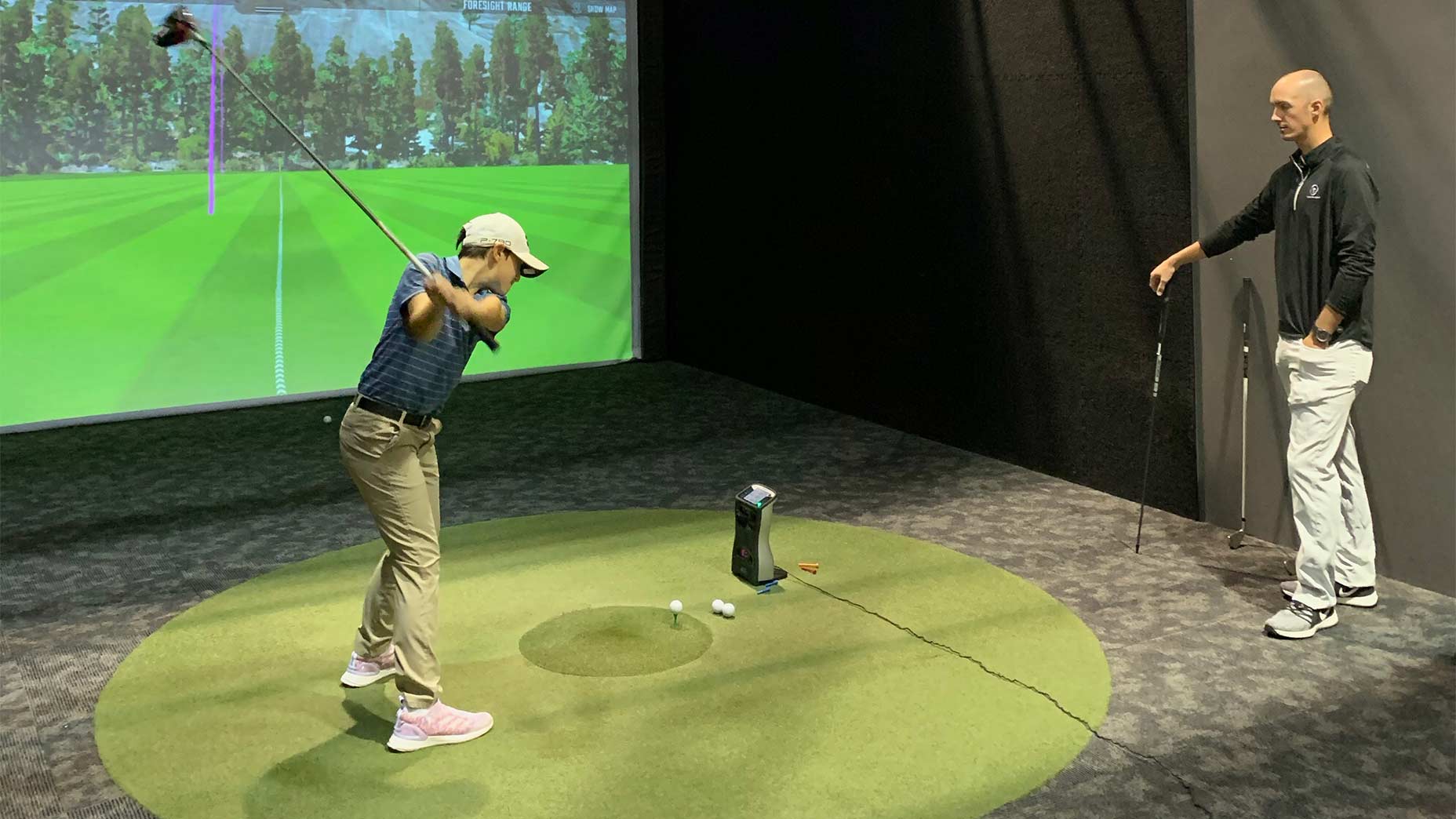
There is at least one key distinction when working with kids versus we adults who, alas, tend to be close to the finished article. In Tim’s apt phrase, you’ve got to “throw the ball in front of the receiver,” which is to say, split the difference between the young player standing before you and the one who will exist six to nine months from now. That’s why the spin rates for Ike’s new irons were left a little lower than ideal — soon enough, his clubhead speed will increase and, with it, those spin rates. You’re fitting to the potential and not simply the current reality. You’re building in not only growth and strength but also, winningly, optimism. Your kid is going to get better and better.
Also, you’re not necessarily going bankrupt. Custom clubs are no doubt expensive. At least in our case, however, barring a mega growth spurt, we’re probably looking at two to three years before the shafts will need to be replaced in the irons and at least a year with the woods. The clubheads themselves, being fully standard weight, will last until the grooves are shot.
With a 6-iron shaft family picked out after much trial and error, and validating and revalidating, my favorite moment of the fitting arrived. Ike walked over with Caulen to a sleek, white flat file, the top drawer of which opened to reveal what looked to be every 6-iron head known to man. My son resembled the pirate who’d unlatched a plundered chest to discover within a mountain of gold coins and gleaming baubles. New York’s famous diamond district stands mere blocks away from True Spec, but for Ike it was right here.
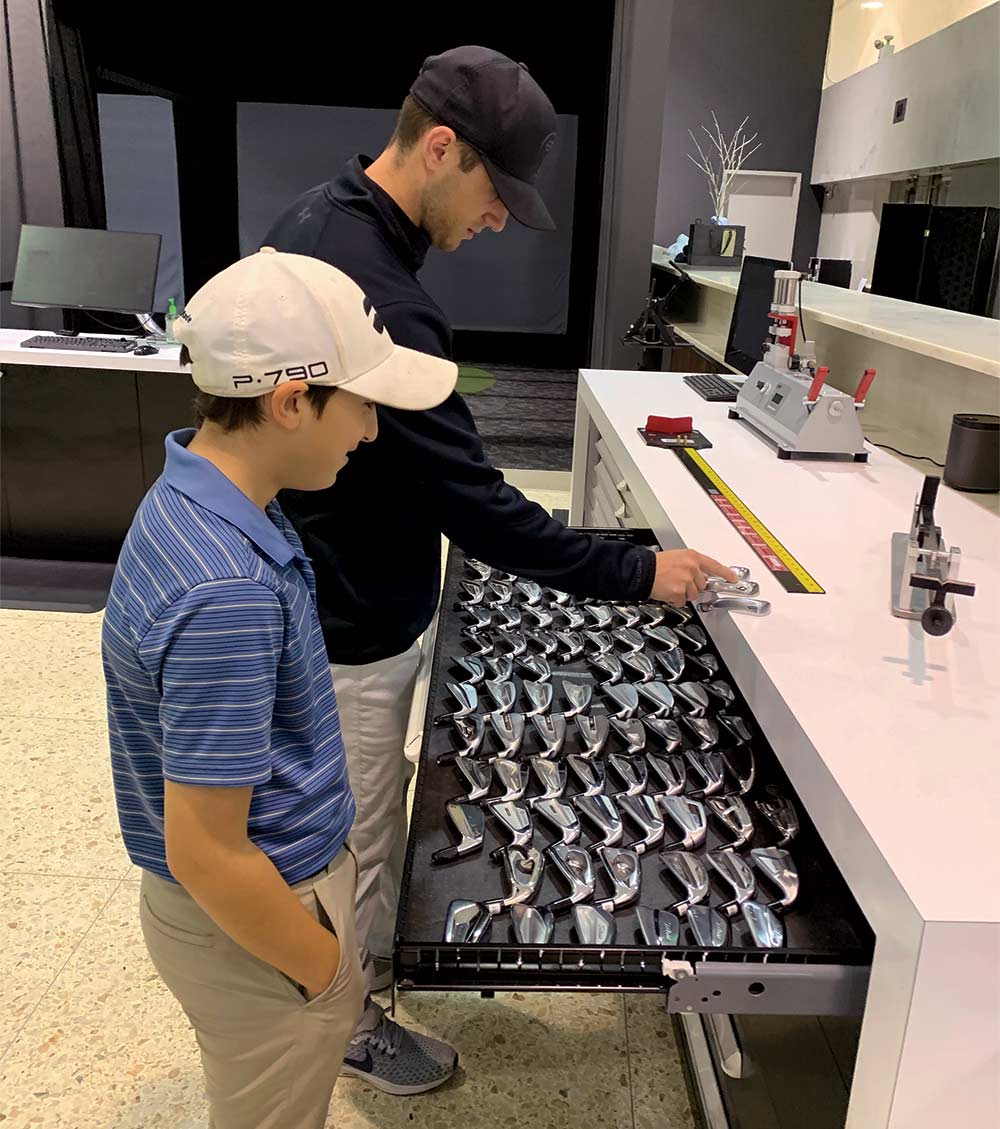
By the end of the two-plus-hour fitting — Ike would have closed the joint given his druthers — my unflagging child had gone from wide-eyed ingenue to, if not quite a pampered Tour pro, certainly someone more than comfortable being waited upon hand and foot, driver to putter. Putter fitting was in fact the final item on the agenda, and Ike, handed Sean’s first suggested flatstick, a TaylorMade TP Patina Ardmore 3 with less toe hang and so easier to square up than his gamer, proceeded to center-cut three straight 10-footers.
“I’m not sure I love the sound of it,” Ike said.
“What,” Sean replied dryly, “you don’t like hearing the ball drop in the hole?”
The numbers didn’t lie. Ike’s face angle in relation to the target went from 1.4 degrees open with his old putter to 0.2 degrees open, with dispersion cut in half. Naturally, he was hell-bent on trying a half-dozen more models. Eventually, however, told that, yes, True Spec could add an aiming dot to the topline, my boy was finally sold on the Ardmore as the final custom club in his bag.
Making the upgrade: A before-and-after look at the key numbers
OLD DRIVER: TaylorMade M6, 12 degree, 45 inches; Ball speed: 113.8 mph; Launch angle: 19.7 degrees; Backspin: 3565 rpm; Total distance: 187 yards
NEW DRIVER: TaylorMade M6, 10.5 degree, 43 inches; Ball speed: 117 mph; Launch angle: 16.6 degrees; Backspin: 2322 rpm; Total distance: 206 yards
OLD 3-WOOD: TaylorMade Miscela 3-wood, 41.5 inches; Ball speed: 106.8 mph; Launch angle: 18 degrees; Backspin: 4554 rpm; Total distance: 165 yards
NEW 3-WOOD: TaylorMade M6 3-wood, 41 inches; Ball speed: 113.3 mph; Launch angle: 16 degrees; Backspin: 3416 rpm; Total distance: 187 yards
OLD 6-IRON: Nike Vapor, 37.5 inches; Ball speed: 91.2 mph; Launch angle: 24.3 degrees; Backspin: 5690 rpm; Carry distance: 121 yards
NEW 6-IRON: Mizuno JPX919 Hot Metal Pro, 36.5 inches; Ball speed: 96.6 mph; Launch angle: 22.1 degrees; Backspin: 4416 rpm; Carry distance: 134 yards
(True Spec Golf and GOLF.com are affiliates of 8AM Golf.)

